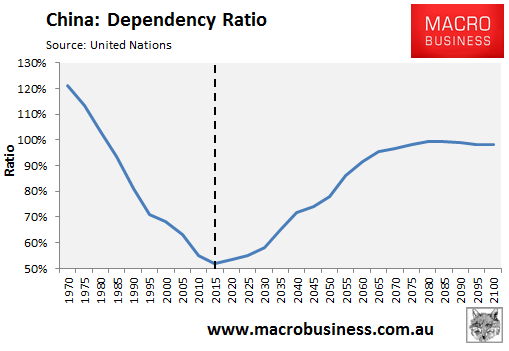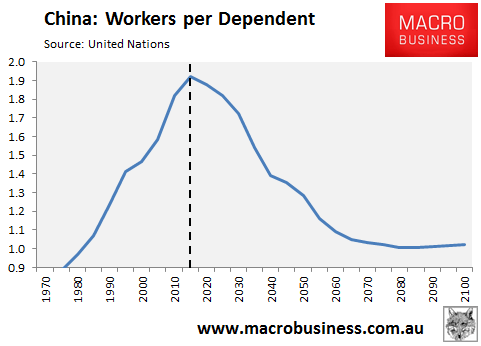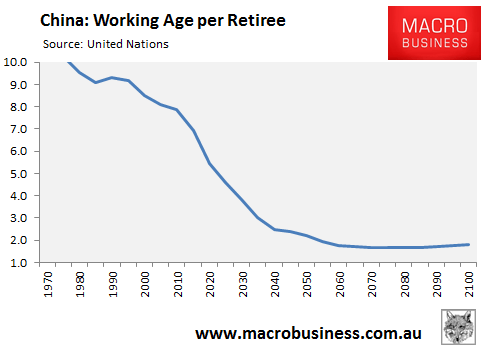I have noted previously how China’s economy is facing stiff headwinds from an ageing population (see here, here, here, and here).
Essentially, China’s ageing problem stems from its ‘one child policy’, which was brought into effect in the early-1970s and is credited with preventing around 400 million births from 1979 to 2010. This policy initially produced a population pyramid optimal to economic growth – that is, where the largest segments of the population were neither young nor old, but in the middle (i.e. working age).
However, the demographic blessing provided by the one child policy has turned into a curse, with the United Nations forecasting that the number of working aged people to dependents is set to almost halve over the 50 years to 2065, from a peak of 1.9 workers to dependents in 2015 to only 1.0 by 2065 (see charts below).




